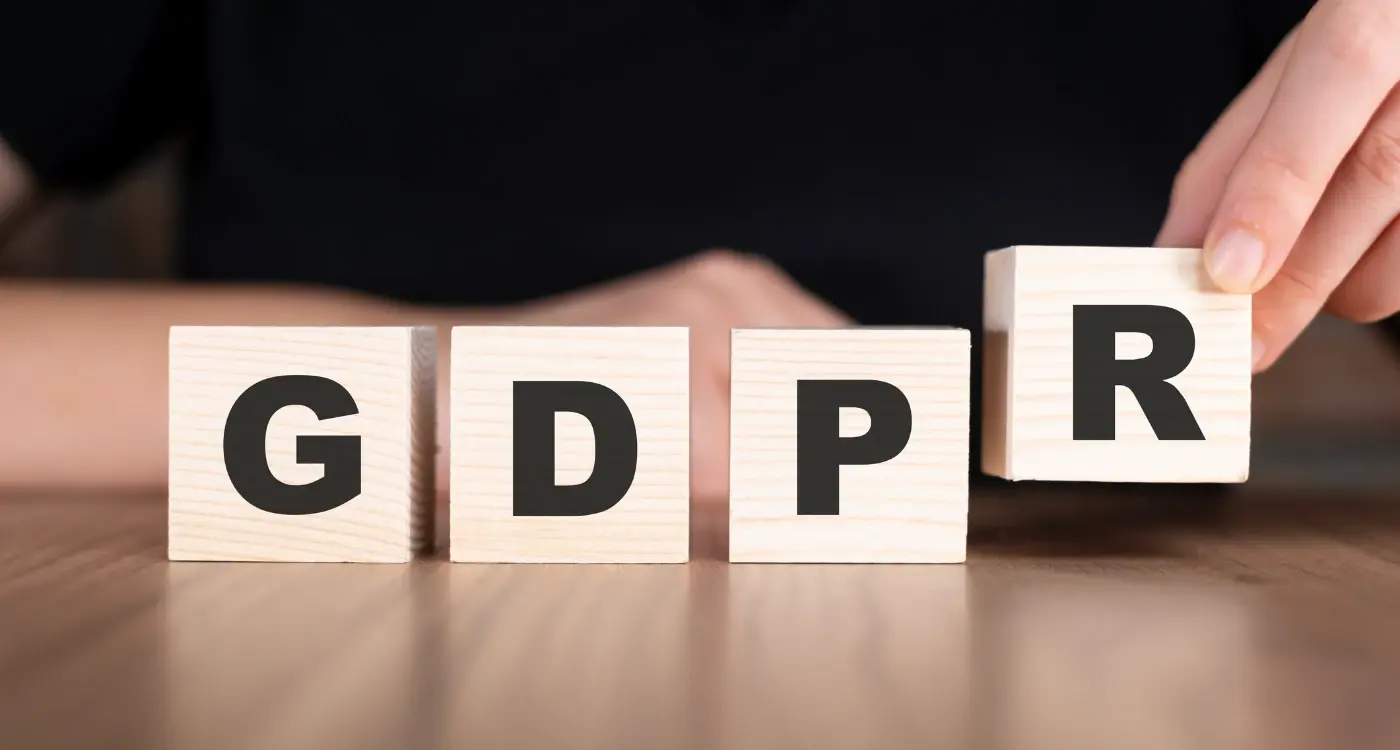What Privacy Rules Apply to Location Data Collection?
Location data from mobile apps is accessed by an estimated 95% of smartphone users daily—yet most people have no idea what privacy rules actually protect their GPS information. That's a problem when you consider that location data reveals where we live, work, shop, and spend our personal time. For mobile app developers, getting location privacy wrong isn't just bad practice; it can lead to hefty fines, user backlash, and serious legal trouble.
The thing is, location privacy rules aren't straightforward. You've got GDPR in Europe, different state laws in America, and various national regulations around the world—all with their own requirements for how you collect, store, and use GPS data. What makes it trickier is that location information is considered particularly sensitive because it reveals so much about a person's life and habits.
Location data is like a digital fingerprint that tells the story of our daily lives, which is why privacy laws treat it with extra care
Whether you're building a fitness app that tracks runs, a food delivery service, or a social platform with check-ins, understanding these privacy rules isn't optional—it's part of responsible app development. The good news is that following location privacy regulations properly actually builds user trust and can give your app a competitive edge. Users are becoming more privacy-conscious, and they're more likely to keep using apps that are transparent about data collection and respect their choices.
Understanding Location Data and Why Privacy Matters
Location data is everywhere in mobile apps these days—from weather apps knowing which city you're in to dating apps showing matches nearby. But what exactly counts as location data? It's not just your GPS coordinates. Location data includes anything that can work out where you are or where you've been.
Your phone collects this information in ways you might not expect. Wi-Fi networks your device connects to, Bluetooth beacons in shops, even which mobile towers your phone pings—all of this reveals your location. Some apps use your IP address to guess roughly where you are, whilst others track which places you visit through check-ins or photos.
Types of Location Data Apps Collect
- Precise GPS coordinates (latitude and longitude)
- Wi-Fi network names and signal strength
- Bluetooth beacon data from nearby devices
- Cell tower information
- IP address location estimates
- Location history and movement patterns
Here's where things get interesting—and slightly worrying. Location data is incredibly personal. It can reveal where you live, work, worship, or receive medical treatment. Combined with timestamps, it builds a detailed picture of your daily routines and habits. That's powerful stuff.
Why This Data Is So Sensitive
Location information never exists in isolation. When apps combine your location with other data points, they can infer things about your lifestyle, income, health conditions, or personal relationships. A fitness app might know you visit the gym every Tuesday; a navigation app tracks your commute patterns; a social media app records every restaurant you visit.
This is why privacy laws treat location data with extra care. People deserve to know when their whereabouts are being tracked, how that information gets used, and who has access to it. Getting this wrong doesn't just break trust—it can land app developers in serious legal trouble.
The Legal Landscape of Location Privacy
The legal world surrounding location privacy has become incredibly complex over the past few years. Different countries have different rules, and keeping track of them all can feel overwhelming—especially when you're trying to build an app that works globally.
At the heart of most location privacy laws is a simple principle: people should know when their location data is being collected and they should have control over it. But the devil is in the details, and those details vary significantly depending on where your users are located.
Major Legal Frameworks You Need to Know
The big players in location privacy regulation include the GDPR in Europe, CCPA in California, and various national laws that are popping up around the world. Each has its own quirks and requirements, but they all share common themes around transparency and user control.
What makes location data particularly tricky from a legal standpoint is that it's often considered "sensitive personal data" under these frameworks. This means stricter rules apply compared to other types of information your app might collect.
- Explicit consent requirements for GPS data collection
- Clear privacy notices explaining location data use
- User rights to access, delete, and port their location information
- Data minimisation principles limiting collection to necessary purposes
- Security safeguards to protect stored location data
Always check the specific laws in your target markets before launching your app. What's acceptable in one country might be completely prohibited in another, and the penalties for getting it wrong can be severe.
The landscape continues to evolve rapidly as governments worldwide grapple with balancing innovation against privacy rights. Staying compliant isn't just about following today's rules—it's about building systems that can adapt to tomorrow's regulations.
GDPR Requirements for Location Services
The General Data Protection Regulation—or GDPR as most of us know it—treats location data as special category personal data. This means it gets extra protection under European law, and rightly so. When your app collects GPS coordinates, cell tower data, or even Wi-Fi positioning information, you're handling some of the most sensitive data about your users.
GDPR requires what's called "explicit consent" for location data collection. This isn't just a simple toggle switch buried in your settings menu. Users must actively opt-in with a clear understanding of why you need their location, how you'll use it, and who you might share it with. The consent request must be separate from other permissions and written in plain language that anyone can understand.
Key GDPR Obligations for Location Data
- Obtain explicit, informed consent before collecting any location information
- Provide clear privacy notices explaining data usage and retention periods
- Allow users to withdraw consent at any time without affecting app functionality
- Implement data minimisation—only collect what you actually need
- Ensure secure storage and transmission of all location data
- Respond to user requests for data access, correction, or deletion within 30 days
The regulation also introduces the concept of "privacy by design." This means building privacy protections into your app from the ground up, not adding them as an afterthought. You should regularly audit your location data practices and maintain detailed records of how you process this information.
Penalties and Enforcement
GDPR isn't just paperwork—the penalties are serious. Organisations can face fines up to 4% of annual global turnover or €20 million, whichever is higher. European data protection authorities have already issued substantial fines to companies mishandling location data, so compliance isn't optional if you want to operate in European markets.
Getting Proper Consent for GPS Data
Getting consent for location data isn't just about ticking a legal box—it's about building trust with your users from day one. I've seen too many apps rush through this process, only to face user complaints and potential legal issues down the line. The reality is that proper geolocation consent requires careful planning and clear communication.
Your consent request needs to be specific, clear, and given freely by the user. This means no pre-ticked boxes, no bundling location permissions with other features, and definitely no hiding the request in your terms and conditions. Users must understand exactly what location data you're collecting, why you need it, and how long you'll keep it.
Timing Your Consent Request
The moment you ask for GPS data protection consent matters enormously. Pop up a location request as soon as someone opens your app, and they'll likely say no—they haven't seen the value yet. Instead, wait until they're about to use a feature that genuinely needs location data. A food delivery app should ask when someone wants to find nearby restaurants, not during the initial app setup.
The best consent requests feel like a natural part of the user journey, not an interruption to it
Making Consent Meaningful
Your consent mechanism should allow users to withdraw permission as easily as they gave it. Include clear toggles in your app settings, and respect when someone says no. Under GDPR location services requirements, consent must be revocable—and that's actually good for business too. Users who feel in control of their data are more likely to trust your app long-term, which leads to better retention rates and positive reviews.
How Different Countries Handle Location Privacy
Location privacy laws change dramatically depending on where your app users are located. Each country has developed its own approach to protecting people's whereabouts data—and some are much stricter than others.
The European Union leads the pack with GDPR, which treats location data as sensitive personal information requiring explicit consent. You can't just slip location tracking into your terms and conditions; users must actively agree to it. The penalties are severe too—up to 4% of global revenue for companies that get it wrong.
North American Approaches
The United States takes a more fragmented approach. There's no single federal law covering location privacy, but individual states are stepping up. California's CCPA gives residents the right to know what location data companies collect and delete it if they want. Other states are following suit with their own rules.
Canada requires meaningful consent for location data collection under PIPEDA. This means clear, understandable language about what you're doing with GPS information—no legal jargon allowed.
Asia-Pacific Variations
Australia's Privacy Act covers location data but enforcement has been relatively light compared to Europe. That's changing though, with stronger penalties coming into effect.
Countries like Singapore and Japan have comprehensive data protection laws that include location information, whilst others in the region are still developing their frameworks.
The key takeaway? You can't assume what works in one country will work everywhere else. If your app operates globally, you need to understand the specific requirements for each market. The safest approach is often to follow the strictest standard—usually GDPR—across all regions rather than trying to manage different compliance levels.
Common Compliance Mistakes Mobile Apps Make
After years of working with mobile apps, I can tell you that most location privacy failures happen for the same predictable reasons. The biggest mistake? Apps that collect GPS data before asking permission. This sounds obvious, but you'd be surprised how many developers still get this wrong—they start tracking location data the moment someone opens the app, then show a consent popup afterwards. That's backwards and breaks GDPR rules straight away.
Another frequent problem is vague consent requests. Apps will show generic messages like "Allow location access to improve your experience" without explaining what they actually do with the data. Users need to know if you're sharing their location with advertisers, storing it on servers, or just using it temporarily. Being specific isn't just good practice; it's legally required under most privacy laws.
The Consent Withdrawal Problem
Many apps make it easy to give consent but nearly impossible to withdraw it. I've seen apps where users have to dig through multiple settings screens just to turn off location tracking. The law says withdrawing consent should be as simple as giving it—if someone can enable GPS tracking with one tap, they should be able to disable it just as easily.
Data Retention Mistakes
Apps often keep location data far longer than needed. Some store GPS coordinates indefinitely "just in case" they might need them later. This creates unnecessary privacy risks and violates data minimisation principles. Set clear retention periods and actually delete old location data when you said you would.
Always test your app's location permissions as if you were a privacy-conscious user. Can you easily find and change location settings? Is it clear what data you're collecting and why?
Building Privacy-First Location Features
When you're building location features into your mobile app, thinking about privacy from the very start will save you headaches later on. I've worked on countless apps that tried to bolt privacy measures on afterwards—it never ends well. The secret is baking privacy protection right into the core of how your location features work.
Minimise Data Collection
The best approach is to collect only the location data you actually need. If your weather app needs to show local forecasts, you don't need to track users continuously; a single location request when they open the app will do the job perfectly well. Many developers collect precise GPS coordinates when a rough city-level location would work just fine for their use case.
Consider using location zones instead of exact coordinates. Rather than storing someone's precise address, you might only need to know they're in Manchester or Birmingham. This approach gives you the functionality you need whilst keeping user data much more private.
Give Users Control
Build granular controls that let users choose how much location data they want to share. Some people are happy to share their exact location all the time, whilst others prefer to share it only when using the app. Your location features should work gracefully at different privacy levels—don't punish users for choosing more private options.
Remember to provide clear explanations about what location data you're collecting and why. Users are much more likely to grant location permissions when they understand the genuine benefit they'll receive. Be honest about your data practices and make it easy for users to change their minds later if they want to adjust their privacy settings.
Technical Solutions for Data Protection
When you're handling location data in your mobile app, you need proper technical safeguards—not just legal compliance boxes to tick. The reality is that good intentions aren't enough; you need robust systems that actually protect your users' GPS data from the moment it's collected until it's deleted.
Start with encryption. All location data should be encrypted both in transit and at rest. This means when data travels between your app and servers, and when it sits in your database. AES-256 encryption is the gold standard here, though I know it sounds technical. Think of it as putting your users' data in an unbreakable safe that only you have the key to.
Data Minimisation and Storage
Here's what many developers get wrong—they collect and store everything "just in case." Don't do this. Only collect the location data you actually need for your app's core functionality. If you need to know someone's general area for weather updates, you don't need pinpoint GPS coordinates down to the metre.
The best data protection strategy is not collecting unnecessary data in the first place—you can't lose what you never had
Access Controls and Monitoring
Set up proper access controls within your team. Not everyone needs access to location databases; limit it to those who absolutely require it for their job. Implement logging systems that track who accessed what data and when. This isn't about not trusting your team—it's about having clear audit trails if something goes wrong.
Regular security audits and penetration testing should be part of your routine, not something you do once and forget about. Location data is sensitive stuff, and your users are trusting you with information that could reveal their home address, workplace, and daily routines.
Conclusion
Location data privacy isn't going away—if anything, it's becoming more complex as governments worldwide tighten their grip on how companies handle personal information. What started with GDPR has now spread across continents, and each region brings its own flavour of rules and requirements. The simple truth is that getting this wrong can cost your business dearly, not just in fines but in user trust.
Throughout this guide, we've covered the legal frameworks that matter most; from Europe's strict GDPR requirements to California's CCPA and everything in between. We've looked at how to get proper consent—and more importantly, how to make sure that consent actually means something. The technical side matters too, which is why we explored encryption, data minimisation, and other tools that help protect your users' information from the moment it's collected.
Building privacy-first location features might seem like extra work, but it's really about building better products. When users trust your app with their location data, they're more likely to engage with your features and stick around longer. The companies that understand this early will have a massive advantage over those still treating privacy as an afterthought.
The common mistakes we covered—storing data too long, collecting more than you need, buried consent flows—these are all avoidable if you plan ahead. Privacy by design isn't just a legal requirement in many places; it's good business sense. Your users will thank you for it, and your legal team will sleep better at night knowing you've got the basics covered properly.
Share this
Subscribe To Our Learning Centre
You May Also Like
These Related Guides

How Much Does It Cost to Make My App GDPR Compliant?

How Do You Prepare for Data Protection Regulatory Reviews?



